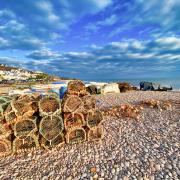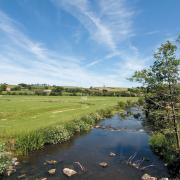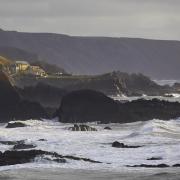If you are planning a family beach day this summer, then here’s 12 top hacks for having a safe and enjoyable day out
Family beach days should be fun. But when you’re spending the day on the beach with teenagers and/or toddlers plus those in-between, there are a whole host of ways in which fun can be replaced with frustration.
We spoke to watersports clothing and equipment manufacturer, Typhoon to discover their best 12 beach hacks to guarantee a good time is had by all:

1. Empower your children
Our first tip for a successful day trip is to empower each child as soon as possible to take responsibility for their day. You’re already going to be thinking of sun, hygiene and water safety, so getting each child to prepare a list of what they need in advance, and the rucksack to carry it in, will help to focus their mind on getting ready...whether they’re four or 14.
They can find their hat, glasses, swimming costume, their favourite towel, and a couple of changes of clothing (including long sleeves in case of too much sun) and pack it themselves (you can check they’ve got it all).
Whether they want to take a traditional bucket and spade, ball, beach game or a blow-up paddleboard and all the stuff to go with it, make sure they’re thinking about what they need – and collecting it – the day before. (Top tip...mesh bags are great for stashing sand toys in and brilliant for giving them a quick rinse before you head back to the car.)

2. Empower yourself
Hopefully there’ll be enough adults with you that you’ll be able to grab some time to yourself. Thus, you’ll need a sturdy rucksack with enough room for your towel, your personal library, and potentially all the food too. If there’s a change of weather, will your rucksack be keeping your spare clothes dry?
It’s likely that you’ll want to enjoy (or be persuaded into enjoying) beach games. Think about keeping your keys and phone safe with a waterproof bum-bag. This means you can go into the water to retrieve any missed catches, and not worry about leaving your high-value items unattended.
3. What’s on your feet?
There’s nothing worse than going to a new beach and finding out you don’t have the right footwear for the day. Check in advance if there’re rock pools or acres of hot sand and invest in decent shoes for the family
4. Where’s the sea going to be?
Check out the tide times, so when you rock up with your giant beach blanket and stake your space with sun-umbrellas and flags, you know for sure you’re not going to be washed out half an hour later and have to scramble for a space on the edges of someone else’s territory.
5. What’s the temperature?
Of course, the weather and sea temperature will have a big effect on your day out. If you – or any members of your family – feel the cold, a short wetsuit is a great investment, especially as they’re high quality and can be recycled through the generations (Top tip: take a bucket to transport sandy wetsuits home and rinse with fresh water before drying and read this blog on caring for your wetsuit).

6. Where will you all change?
Is there somewhere for your teenager to change into, or out of, their swimwear? For those with self-conscious teenagers, a good idea is to take a changing area with you – if you’re investing in a new beach tent for the younger ones, make sure it’s one that a teen can change in and protect their modesty.
7. Food for thought
If you’re planning on having a barbecue in-situ, make sure you’ve checked with whoever is responsible for the beach you’re visiting that it’s allowed. Kelly Kettles are fun for making a brew with driftwood and for cooking up an adventurous storm.
Many parents recommend wrapping-up food into small portions to stop the dreaded sand contamination in everything, and never, ever sharing a grab bag of crisps – unless sand and vinegar is your preferred favourite! Small plastic food tubs are easily stackable when empty and can be used for extra sandcastle building in case of emergency.
Freeze a couple of bottles of water and use those as ice packs for other bottles of water – and then drink them later. The steel water bottles which keep drinks chilly are also great.
8. Take some baggage
Take a couple of bags with you...one for rubbish, one for wet gear. It makes life so much easier if you have these ready and to hand.

9. Let teenagers get board (see what we did there?)
While your younger ones are generally easily catered for (and have packed their toys), don’t run the risk of your teenagers being bored. Get them a stand-up paddleboard in advance. This means you’re not going to be running around looking to buy a SUP or bodyboard while also trying to apply sunscreen to a younger child.
Mindful of the fact that you’ve invested in your teenager’s fun, make sure they’re not going to lose the board at the first wipe-out. Leashes come attached to some bodyboards (check this when buying yours) and are available to buy for SUPs. Also, casually remind your teen to take a pump and paddle.
We always advocate wearing a buoyancy aid when using a SUP, and don’t forget one for your furry friend if he or she is likely to want to round-up your teenager as they’re paddling alongside the shore. Or – indeed – if they’re simply an adventurous pooch that doesn’t know their own limits.
10. Skin safety
UV protective clothes help cut down on the amount of sunscreen needed. Always have a long-sleeved version of top and bottoms to protect from the sun if it’s all too much.
Research sun creams which are marine friendly (and apply it at home before you leave if it’s a sandy beach).
Take umbrellas (some umbrella beach stands are awesome for stability) and/or tents to give children a break from the sun.
Pack a small first aid kit – plasters, antiseptic cream, antihistamines and insect soother are a few basics to start with.
Solar-powered showers are available to clip to the back of a car door. Wash off the salt and sand before getting into the car for a more comfortable ride home.

11. Water safety
Make sure you know about the local water conditions.
Don’t take blow-up inflatable rubber rings as these are made for enclosed water, like swimming pools.
“Inflatables are not designed for open water and it takes very little breeze for them to be swept out to sea much quicker than you can swim or paddle back to the beach,” says Gareth Morrison, RNLI head of water safety. “What may seem fun at first can turn into an extremely serious situation, in a matter of seconds.”
A top tip for younger years is to take a waterproof wristband with your phone number written on it – especially if it’s a busy beach. You can find these online.
12. Hygiene safety
A filled bucket of water, half buried in the sand, is a great way to have a handy hand dip prior to eating. Rinse off all the sand and wait for the hands to air dry.
Make sure you have some hand gel and wet wipes in your bag.
Natural baby powder is useful to get sand off feet.
And finally, make sure you all have a great time out there!




























